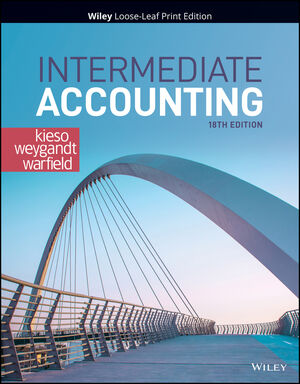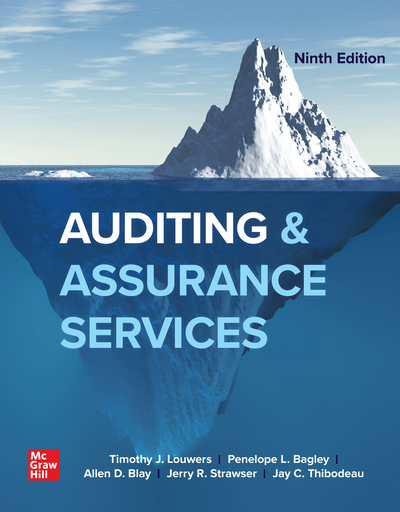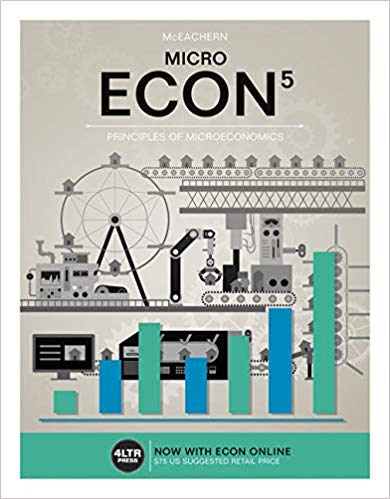Intermediate Accounting, 18th Edition – Test bank
ISBN: 978-1-119-77889-9
Do you need test banks fast? eTestBank.net is the best test bank website for you! Download your test bank right after you pay. No waiting!
Why eTestBank.net is Great:
✅ Instant Download:
Get your test bank right away after payment.
✅ Unlimited Downloads:
Download your test bank anytime and as many times as you want.
✅ 24/7 Live Help:
We are here to help you all day, every day.
✅ Guaranteed Delivery:
If you don’t get the download right away, we will send it to you in 3 to 6 hours.
How to Get Your Test Bank:
- Pick Your Test Bank: Choose from many test banks.
- Pay Safely: Pay securely on eTestBank.net.
- Download Instantly: Get your test bank immediately after payment.
- Download Anytime: Unlimited downloads whenever you need them.
Need Help? Contact Us:
📧 Email: [Support@etestbank.net]
📱 WhatsApp: [https://wa.me/message/MC222DLQ4GDXL1r]
Didn’t Get Your Download?
Don’t worry! If you don’t get the file right away, we’ll send it to you in 3 to 6 hours. Need it sooner? Contact us by email or WhatsApp.
💡 Buy now from eTestBank.net for instant downloads, unlimited access, and 24/7 support—get your test bank today!
Table of contents for Intermediate Accounting Test bank
1 The Environment and Conceptual Framework of Financial Reporting
- 1.1 Financial Reporting Environment 1-2
- 1.2 Conceptual Framework 1-11
- 1.3 Assumptions and Principles 1-18
- 1.4 Major Challenges in Financial Reporting 1-27
- Analytics in Action Big Data for Big Decisions 1-30
2 The Accounting Information System
- 2.1 Accounting Information System 2-2
- 2.2 Analyze and Record Business Transactions 2-8
- Analytics in Action This System Is Full of Data 2-19
- 2.3 Adjusting Entries 2-23
- 2.4 Preparing Financial Statements 2-37
- 2.5 Financial Statements for a Merchandising Company 2-45
- Appendix 2A: Cash-Basis Accounting versus Accrual-Basis Accounting 2-48
- Appendix 2B: Using Reversing Entries 2-54
- Appendix 2C: Using a Worksheet: The Accounting Cycle Revisited 2-56
3 Income Statement, Related Information, and Revenue Recognition
- 3.1 Income Statement 3-2
- Analytics in Action Income Statement Dashboards 3-8
- 3.2 Reporting Special Income Items 3-11
- 3.3 Stockholders’ Equity Statements 3-19
- 3.4 Revenue Recognition—The Fundamentals 3-21
- 3.5 Quality of Earnings 3-29
- Appendix 3A: Accounting Changes and Errors 3-33
4 Balance Sheet and Statement of Cash Flows
- 4.1 Balance Sheet 4-1
- 4.2 Statement of Cash Flows 4-16
- Appendix 4A: Additional Information 4-26
- Appendix 4B: Ratio Analysis—A Reference 4-33
5 Accounting and the Time Value of Money
- 5.1 Basic Time Value Concepts 5-2
- 5.2 Single-Sum Problems 5-8
- 5.3 Annuities (Future Value) 5-14
- 5.4 Annuities (Present Value) 5-21
- 5.5 Other Time Value of Money Issues 5-27
- Analytics in Action Using Present Value for Investment Analysis 5-31
- Appendix 5A: Technology Tools for Time Value of Money Problems 5-34
- Time Value of Money Tables 5-60
6 Cash and Receivables
- 6.1 Cash 6-1
- 6.2 Receivables 6-6
- 6.3 Valuation of Accounts Receivable 6-13
- Analytics in Action Predicting the Future 6-19
- 6.4 Notes Receivable 6-20
- 6.5 Other Issues 6-28
- Appendix 6A: Cash Controls 6-36
- Appendix 6B: Collectibility Assessment Based on Expected Cash Flows 6-42
7 Valuation of Inventories: A Cost-Basis Approach
- 7.1 Inventory Issues 7-2
- 7.2 Goods and Costs Included in Inventory 7-8
- 7.3 Which Cost Flow Assumption to Adopt? 7-14
- 7.4 Special Issues Related to LIFO 7-24
- 7.5 Effect of Inventory Errors 7-32
- Analytics in Action Inventory Matters 7-35
8 Inventories: Additional Valuation Issues
- 8.1 Lower-of-Cost-or-Net Realizable Value 8-2
- 8.2 Lower-of-Cost-or-Market 8-7
- Analytics in Action Role of Big Data in Inventory 8-11
- 8.3 Other Valuation Approaches 8-13
- 8.4 The Gross Profit Method of Estimating Inventory 8-19
- 8.5 Retail Inventory Method 8-22
- 8.6 Presentation and Decision Analysis 8-31
9 Acquisition and Disposition of Property, Plant, and Equipment
- 9.1 Property, Plant, and Equipment 9-2
- 9.2 Interest Costs During Construction 9-10
- 9.3 Valuation of Property, Plant, and Equipment 9-16
- 9.4 Costs Subsequent to Acquisition 9-26
- 9.5 Disposition of Property, Plant, and Equipment 9-32
- Analytics in Action Capital Expenditure Trends 9-34
- Appendix 9A: Accounting for Contributions 9-35
10 Depreciation, Impairments, and Depletion
- 10.1 Depreciation—A Method of Cost Allocation 10-2
- 10.2 Impairments 10-15
- 10.3 Depletion 10-20
- 10.4 Presentation and Decision Analysis 10-25
- Analytics in Action A Better Way to Estimate 10-28
- Appendix 10A: Income Tax Depreciation 10-29
11 Intangible Assets
- 11.1 Intangible Asset Issues 11-2
- 11.2 Types and Presentation of Intangible Assets 11-8
- 11.3 Goodwill 11-17
- Analytics in Action Goodwill Hunting? 11-21
- 11.4 Research and Development Costs 11-25
12 Current Liabilities and Contingencies
- 12.1 Current Liabilities 12-2
- 12.2 Unearned Revenues 12-14
- 12.3 Contingencies 12-19
- 12.4 Presentation and Decision Analysis 12-29
- Analytics in Action Current Ratio Analysis Can Lead to Innovation 12-34
13 Long-Term Liabilities
- 13.1 Bonds Payable 13-2
- 13.2 Extinguishment of Debt 13-17
- 13.3 Long-Term Notes Payable 13-19
- 13.4 Reporting and Analyzing Liabilities 13-28
- Analytics in Action Helping to Put Debt into Perspective 13-34
- Appendix 13A: Troubled-Debt Restructuring 13-34
14 Stockholders’ Equity
- 14.1 Corporate Capital 14-2
- 14.2 Reacquisition of Shares 14-17
- 14.3 Dividend Policy 14-24
- 14.4 Presentation and Decision Analysis of Stockholders’ Equity 14-36
- Analytics in Action Track Those Ratios! 14-40
- Appendix 14A: Dividend Preferences and Book Value per Share 14-40
15 Dilutive Securities and Earnings per Share
- 15.1 Dilutive Securities 15-2
- 15.2 Stock Warrants 15-7
- 15.3 Stock Compensation Plans 15-11
- 15.4 Basic Earnings per Share 15-23
- 15.5 Diluted Earnings per Share 15-28
- Analytics in Action Earnings per Share versus Net Income 15-37
- Appendix 15A: Accounting for Stock-Appreciation Rights 15-39
- Appendix 15B: Comprehensive Earnings per Share Example 15-42
16 Investments
- 16.1 Investments in Debt Securities 16-1
- 16.2 Investments in Equity Securities 16-14
- 16.4 Other Financial Reporting Issues 16-23
- Analytics in Action Risky Retirement 16-33
- Appendix 16A: Accounting for Derivative Instruments 16-34
- Appendix 16B: Fair Value Disclosures 16-50
17 Revenue Recognition
- 17.1 Fundamentals of Revenue Recognition 17-2
- 17.2 The Five-Step Process Revisited 17-6
- 17.3 Accounting for Revenue Recognition Issues 17-21
- Analytics in Action Are You Going to Keep That? 17-23
- 17.4 Presentation and Disclosure 17-34
- Appendix 17A: Long-Term Construction Contracts 17-39
- Appendix 17B: Revenue Recognition for Franchises 17-51
18 Accounting for Income Taxes
- 18.1 Fundamentals of Accounting for Income Taxes 18-2
- 18.2 Additional Considerations 18-15
- 18.3 Accounting for Net Operating Losses 18-23
- 18.4 Financial Statement Presentation 18-30
- Analytics in Action Visualizing Taxes 18-36
- Appendix 18A: Comprehensive Example of Interperiod Tax Allocation 18-38
- Appendix 18B: Accounting for Net Operating Loss Carrybacks 18-44
19 Accounting for Pensions and Postretirement Benefits
- 19.1 Fundamentals of Pension Plan Accounting 19-2
- 19.2 Using a Pension Worksheet 19-12
- 19.3 Prior Service Cost (PSC) 19-16
- 19.4 Gains and Losses 19-20
- 19.5 Reporting Pension Plans in Financial Statements 19-29
- Analytics in Action Pension De-Risking 19-37
- Appendix 19A: Accounting for Postretirement Benefits 19-39
20 Accounting for Leases
- 20.1 The Leasing Environment 20-2
- 20.2 Accounting for Finance Leases 20-12
- 20.3 Accounting for Operating Leases 20-22
- 20.4 Special Lease Accounting Problems 20-29
- Appendix 20A: Sale-Leasebacks 20-41
- Appendix 20B: Direct Financing Lease (Lessor) 20-45
21 Accounting Changes and Error Analysis
- 21.1 Accounting Changes 21-1
- 21.2 Other Accounting Changes 21-14
- 21.3 Accounting Errors 21-18
- 21.4 Error Analysis 21-25
- Appendix 21A: Changing from or to the Equity Method 21-36
22 Statement of Cash Flows
- 22.1 Overview of Statement of Cash Flows 22-2
- 22.2 Preparing the Statement of Cash Flows 22-6
- 22.3 Net Cash Flow from Operating Activities—Direct Method 22-19
- 22.4 Special Problems in Statement Preparation 22-26
- Analytics in Action Cash Flow Analysis 22-35
- 22.5 Use of a Worksheet 22-37
23 Full Disclosure in Financial Reporting
- 23.1 Full Disclosure Principle 23-2
- 23.2 Disclosure Issues 23-7
- 23.3 Auditor’s and Management’s Reports 23-22
- 23.4 Current Reporting Issues 23-29
- Appendix 23A: Basic Financial Statement Analysis 23-34
Appendix A Private Company Accounting A-1
- A.1 The Private Company Council (PCC) A-1
- A.2 Private Company Alternatives for Intangible Assets and Goodwill A-2
- A.3 Summary A-6
- Appendix B Specimen Financial Statements: The Procter & Gamble Company B-1
- Appendix C Specimen Financial Statements: The Coca-Cola Company C-1
- Appendix D Specimen Financial Statements: PepsiCo, Inc. D-1
- Company Index
- Subject Index
- List of Accounts










